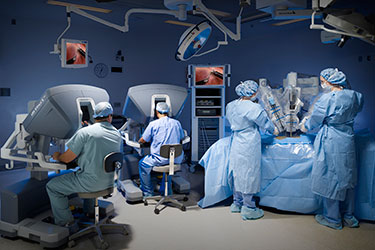| Nanotechnology is a field of research and innovation concerned with building ‘things’generally, materials and devices – on the scale of atoms and molecules. It increases the manufacturing production at significantly reduced costs. Nanotechnology in different fields :- In medical :- The use of nano particles designed to concentrate in a tumor and generate oxygen can increase the effectiveness of the chemotherapy drug doxorubicin. Nano particles that deliver three anti-cancer drugs to the lymp nodes. The intent is to target cancers that use the lymph nodes to spread through the body. Testing of this technique, so far, has been with lab animals. In electronics :- Development of sensors using silver nano wires that might useful in robots and prosthetic. The nano-wire sensors can measure strain and pressure, and are flexible enough to work over the range of motion required by prosthetic. In Manufacturing :- Using silver nano wires in water helps to make transparent, flexible conductive films with a one step spray process . Molecular motor controlled by electrons from a scanning tunneling microscope tip which initiate building molecular motors for use in field such as medicine. |
| |
Category: Uncategorized
Technology in education system
Technology has become an essential tool in our lives. Using technological tools like computers will make education more fun and interesting for the students.
Technology has helped in the growth of mobile learning and long distance learning. The use of internet technology has enabled teachers to reach students across boarders and also students from developing countries have used internet technology to subscribe for advanced educational courses.
Unlike physical classrooms, online learning is flexible and students from different geographical locations can attend the same class with no need of traveling from those locations. Advancement in virtual technology has supported face-to-face communication between students and teachers in the virtual world.
he use of computer based instructions makes students feel in control of what they learn. Students find it easy to learn with technology because computers are patient compared to humans.
- Tablets like Google’s Chromebook are an ideal classroom device because they’re relatively cheap, interchangeable, easy to manage, and provide access to a range of Google’s educational software.
- For math, Dream Box, Zearn, and ST Math are software programs that adapt to students as they learn.

Reference: Herold, B. (2016, February 5). Technology in Education: An Overview. Education Week. Retrieved Month Day, Year from http://www.dweek.org/issues/technology-in-education
Robotic surgery
Robotic surgery is used in minimally invasive procedures and helps to aid in precision, control and flexibility. During robotic surgery, surgeons can perform very complex procedures that are otherwise either highly difficult or impossible. As the technology improves, it can be combined with augmented reality to allow surgeons to view important additional information about the patient in real time while still operating.
When performing robotic surgery using the da Vinci Surgical System:
- The surgeon works from a computer console in the operating room, controlling miniaturized instruments mounted on three robotic arms to make tiny incisions in the patient.
- The surgeon looks through a 3-D camera attached to a fourth robotic arm, which magnifies the surgical site.
- The surgeon’s hand, wrist and finger movements are transmitted through the computer console to the instruments attached to the robot’s arms. The mimicked movements have the same range of motion as the surgeon allowing maximum control.
- The surgical team supervises the robot at the patient’s bedside.
ADVANTAGES:
Surgeons who use the robotic system find that for many procedures it enhances precision, flexibility and control during the operation and allows them to better see the site, compared with traditional techniques.
Often, robotic surgery makes minimally invasive surgery possible. The benefits of minimally invasive surgery include:
- Fewer complications, such as surgical site infection
- Less pain and blood loss
- Quicker recovery
- Smaller, less noticeable scars.

References: Lanfranco, A. R., Castellanos, A. E., Desai, J. P., & Meyers, W. C. (2004). Robotic surgery: a current perspective. Annals of surgery, 239(1), 14-21.
Advancement in medical science.
Technology and medicine have gone hand and hand for many years. Consistent advances in pharmaceuticals and the medical field have saved millions of lives and improved many others. patient outcomes are better than they’ve ever been, and that’s largely due to advances in technology. Surgical techniques, superior imaging, electronic health records and telemedicine have each played significant roles in improving general healthcare.
Innovation in medical fields:
- Development of artificial joints: The successful replacement of injured hips has resulted in significant improvement in a patient’s mobility and overall quality of life.
- Arthroscopy: This surgical procedure allows orthopedic surgeons to visualize, diagnose, and treat problems inside a joint.
- Magnetic resonance imaging (MRI): One of the most important medical inventions, MRI is a method of looking inside the body for medical diagnosis.
- Kidney dialysis: This procedure artificially filters and removes waste products and excess water from blood, giving damaged kidneys a chance to recover normal function.

References: Ellis,M.2019.New medical technologies,retrieved from: https://www.proclinical.com/2019/new-medical-technologies-of-2019
The Journey Begins
Thanks for joining me!
Good company in a journey makes the way seem shorter. — Izaak Walton
